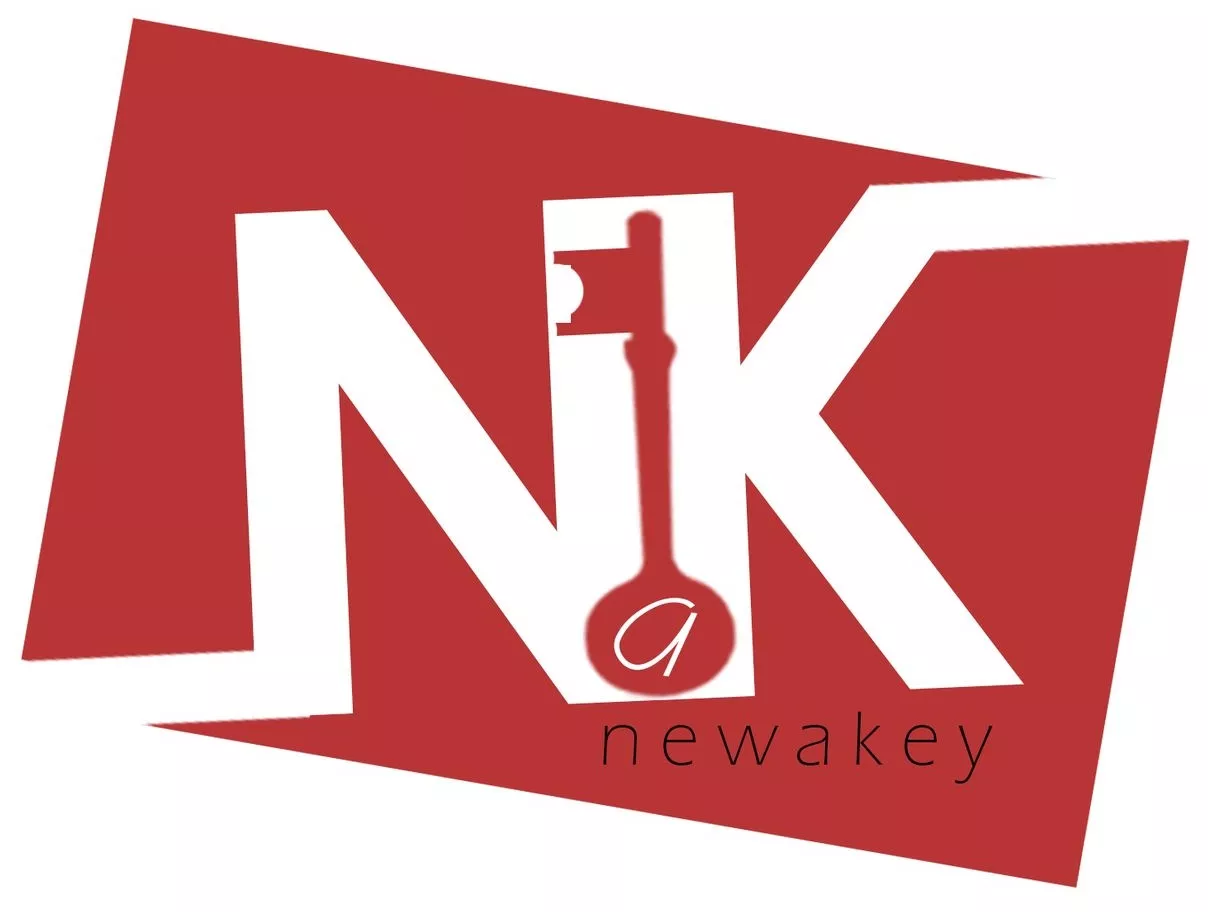✆ + 261 34 25 121 06 ✉ hello@newakey.com
With the advent of the metaverse and NFT, not to mention the latest updates from Google as well as the new social networking news, one can only say that technology keeps evolving. It used to be Web 1.0, then Web 2.0, but now Web 3.0 is here. But what is web 3.0? To know everything about web 3.0, read this article to the end.
What is Web 3.0?
Web 3.0 is the third generation of the internet. With the new evolution of the web, web giants like ‘Apple, Google, Meta and Amazon will no longer have control over online platforms, they won’t even be able to centralize them anymore In fact, its goal is to give back, to the internet users, the power to control their data with a decentralized web. To put it simply, the ultimate goal of Web 3.0 is to eliminate all intermediaries such as large digital companies.
Developed with the use of the blockchain security system, machine learning, artificial intelligence and the semantic web, the concept of Web 3.0 is to interconnect data with each other in order to guarantee a lightning fast user experience.
If today, without Web 3.0, we connect to any application with our email address and password, our activities are tracked by Facebook or Google. And this, to better target their ads. But today, with Web 3.0, we own our data. Why? Because it guarantees a secure connection to the Internet and gives you the ability to choose who and how to store your personal data. Basically, decentralized data networks allow us to do whatever we want with our personal data. Whether we sell it or trade it, our personal information will be treated confidentially.
A short history of the evolution of the web
Before Web 3.0, there was the original Web, Web 1.0 and Web 2.0. The transition between the three lasted more than a decade.
Web 1.0
Web 1.0 or the World Wide Web was conceived by Tim Berners-Lee in 1989. The goal of Web 1.0 was to find the answer to the needs of Internet users, as in recent developments. At this stage, information is in “read-only” mode. They could not interact freely.
Netscape Navigator was the first web browser in the 90s. Then, it was removed by Microsoft during the browser war. It should still be recognized that it is thanks to Netscape Navigator that we owe the foundations of web browsing today:
- A web page is displayed at the time of loading;
- Using Javascript to create interactive content and forms;
- Retention of transfer information using cookies.
Web 2.0
In 1999, the Web encountered another novelty: Web 2.0, an interactive platform where Internet users are in “editing” mode. They can now interact with each other on the Internet through social media and other means.
Web 2.0 is the era :
- From the emergence of true social media;
- Online advertising;
- Influence;
- On social proof;
- Personal data online;
- Online reviews and opinions;
- Digital identity.
Web 2.0 has 3 main levels of innovation:
With the arrival of the iPhone in 2007, users could connect at any time.
Thanks to the cloud, Internet users can access the same files from all connected devices since the storage is not directly on the user’s machine, but on servers in a data center.
Social networks allow us to break away from anonymity by creating content and interacting with social network users.
The evolution of the Web in pictures
Here is a summary table of the evolution of the web.
Web 1.0 | Web 2.0 | Web 3.0 | |
COMMUNICATION | Broadcasting | Interaction | Commitment |
INFORMATION | Read only | Reading and Writing | Writing |
FOCUS | About the companies | About communities | On the individual |
EXPRESSION | Home pages | Blog and social media | Live platform and metaverse |
CONTENTS | Own content | Share content | Content curation |
INTERACTION | Web forms | Web application | Intelligent applications |
SEARCH | Directories | Keywords/tagging | User behaviour |
ADVERTISING | Advertising banner | Interactive advertising | Behavioural advertising |
STUDY | Britannica online | Wikipedia | The Semantic Web |
KEY INDICATORS | Page view | Cost per click | User engagement |
TECHNOLOGIES | HTML/Portals | XML/RSS | RDF/OWL |
Source: CurrentMediaDebates
How is Web 3.0 characterized?
For some, Web 3.0 is the future of the current 2.0. For others, it is the emergence of the Internet of Things, or the Semantic Web. There are those who think it’s just a marketing term to create buzz. Others still say that it is indeed a new era of the web. However, Web 3.0 must meet certain criteria.
Independent
Anyone can participate without the permission of the testing institute. Also, the 3.0 application or 3.0 solution must be usable on all media.
Universal
Users are free to interact publicly and privately without intermediaries that put their data at risk. 3.0 applications should not be affected by operating systems such as software and hardware manufacturers.
Open
Since it is made transparent to the public, it must be “open” as open source software, plus it is also developed by a group of developers.
Omnipresent
Thanks to the IoT or Internet of Things, there will be many new types of smart objects. However, phones and computers will no longer be the only connected devices, unlike Web 2.0.
Accessible
Thanks to Web 3.0, anyone can access the Internet anytime, anywhere.
What are the advantages of Web 3.0 compared to Web 2.0?
To better compare the two generations of the Web, let’s look at the features and benefits of each.
Features of Web 2.0
- When we talk about Web 2.0, we are talking about websites and mobile applications that enrich the content created by Internet users;
- It is designed to give everyone access to communication channels and network connections.
Benefits of Web 3.0
- It allows a more efficient navigation with personalized searches, fast and more precise;
- Artificial intelligence makes it easy to execute complex and personalized commands with voice search and instantly find the actions and information that match your needs.
- Thanks to Web 3.0, we can network our everyday objects.
- The Internet of Things or IOT will be in full emergence;
- Only one is needed, so users do not have to create different personal profiles on all platforms. Data encryption will prevent other organizations from having control over personal information for their own benefit;
- Web 3.0 allows users to create real virtual lives in the metaverse.
- The user experience is subject to more powerful and personalized artificial intelligence systems based on user data. As a result, we only see ads that are relevant to us.
In summary, the Web allows users to contribute and collaborate on website content, while Web 3.0 aims to delegate these tasks to artificial intelligence and semantic Web technologies.
How does Web 3.0 work?
As you already know, Web 3.0 is based on decentralization. Blockchain technology is a kind of decentralized database that allows users to interact with web applications. This allows the user to perform actions stored in the blockchain. Then, the user can access the history of actions at any time and also has a pseudo ID.
With data encryption, all actions are recorded on the blockchain in Web 3.0 applications, allowing users to securely perform any action in the application. There are also “smart contracts”. Their function is to create and manage all blockchain logic.
What are the limits of Web 3.0?
Although Web 3.0 has many advantages, there are still limitations to deal with:
- In this new era, it is much more difficult to manage the personal information contained in a single account, as it can be hacked and this can result in the loss of all personal information. To do this, companies need to strengthen their privacy policies.
- Web 3.0 being a very advanced, modern and intelligent technology, some computers and devices will have difficulties to adopt it;
- With Web 3.0, reputation management is an important issue as information will be easily accessible and users risk losing their anonymity. Companies will have to maintain their name and image online.
Web 3.0 use cases
Web 3.0 is already here. From finance to gaming, it is already in our daily lives. We list below 4 examples of Web 3.0 applications.
Siri from Apple
If before Siri could only perform simple tasks, with Web 3.0 it would be a true personal assistant capable of providing relevant answers to questions asked.
Wolfram Alpha
It is a computer intelligence platform. Now using Web 3.0, it is faster and provides more accurate results.
Storj
Powered by blockchain technology, Storj is one of the oldest decentralized storage solutions.
OpenSea and LooksRare
OpenSea is NFT’s number one marketplace platform. Then, the public was so interested in this new concept that a new marketplace was created: LooksRare.
As you can see, technology is constantly changing. Always be aware of the latest developments! In the meantime, our media agency NEWAKEY is always there to support you in your projects to improve your marketing strategy.

